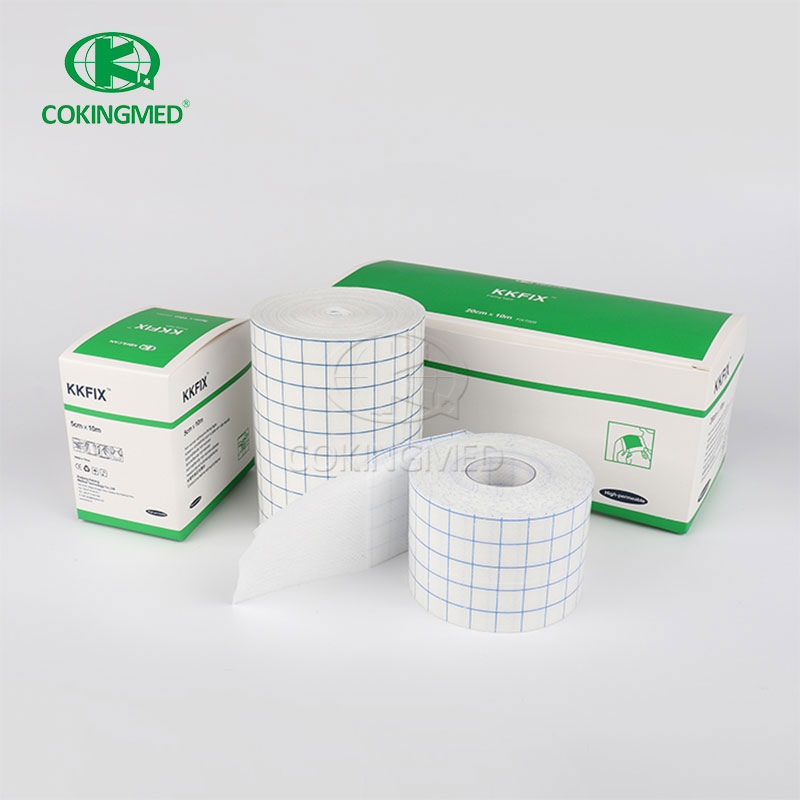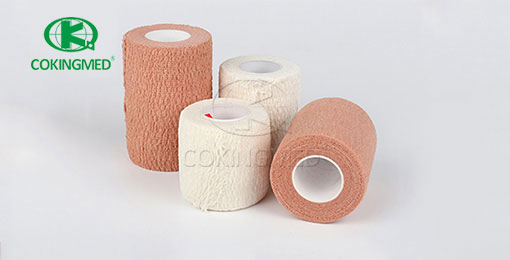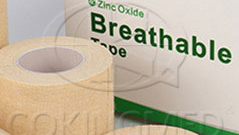How to use a bandage?
Performance: Bandages have different specifications and can be used for dressing different parts of the body, such as fingers, wrists, upper and lower limbs, etc. Ordinary bandages are conducive to the absorption of wound exudates, and high-elasticity bandages are suitable for bandaging of joint injuries. One end is rolled up as a single headband, and both ends are rolled up at the same time to form a double headband, and the two ends of the bandage are cut longitudinally with scissors to form a four headband.
Purpose: To wrap the wound with a bandage, the purpose is to fix the gauze covering the wound, and has the effect of compression and hemostasis, and can also protect the affected area.

Spiral reflex wrapping
Steps:
1. Cover the wound with a sterile or clean dressing and fix the dressing.
2. Open the bandage, make the first circle slightly oblique, about 45 degrees; and press the first circle at an oblique angle into the annular circle and circle the second circle.
3. Wrap the pressure around the limb for 4-5 laps, each lap covers the previous lap, and the wrapping range of the bandage should exceed the edge of the accessories.
4. Finally, reduce the excess of the bandage and fix it with adhesive tape. You can also cut the end of the bandage into two strips longitudinally from the center, and then tie it.
Spiral wrapping
This method is mostly used for limbs and trunks with the same thickness.
Steps:
1. Cover the wound with a sterile or clean dressing and fix the dressing.
2. First, wrap two circles according to the circular method.
3. From the third circle, wrap each circle to cover one-third or one-half of the previous circle in a spiral shape.
4. Finally, end with a ring bandage.
Note: Apply even force when wrapping, and fasten from the inside out. The dressing over the wound should be completely covered when the dressing is complete.

Precautions
1. When doing each operation, it is necessary to confirm whether the site environment is safe and do personal protection. Rescue can only be carried out when the scene environment is safe.
2. The action of dressing the wound should be "light, fast and accurate, cover first and then cover, not cover and not cover".
"Light": The bandaging action should be light, do not collide with the wound, so as not to increase the pain and bleeding of the injured patient;
"Fast": the wound should be found quickly, and the bandaging action should be fast, so as to avoid further infection of the wound and pain of the patient;
"Accurate": The bandaging site should be accurate and tight, and the wound should not be leaked;
"Sturdy": The bandage should be firm and tight, so as not to hinder blood flow and compress nerves.
3. The bandage should not be too loose, otherwise the gauze will not be fixed. If you are inexperienced, after the bandage is applied, see if the far side of the body has become cold, whether there is swelling, etc.
4. When tying the knot, do not over the wound or behind the body.
5. In the case that there is no bandage and must be bandaged, towels, handkerchiefs, sheets (torn into narrow strips), long-tube nylon socks, etc. can be used instead of bandages.







